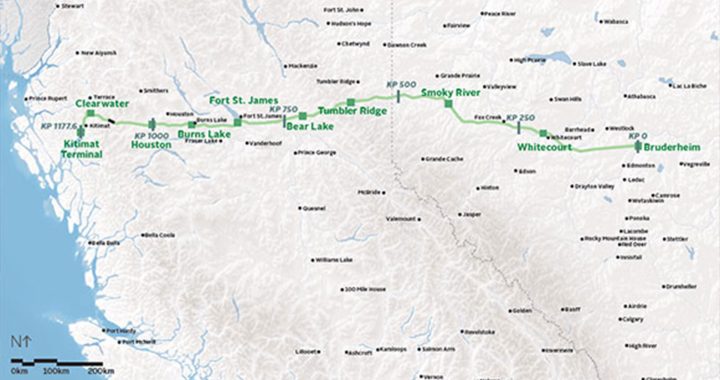PMO downplayed rich Inuit link to discovered Franklin ship
The Franklin expedition ship found by researchers on the Arctic seabed has a detailed and colourful history within Inuit oral tradition, yet the Inuit garnered only one 17-word sentence among the press releases and backgrounders released by the Prime Minister’s Office at the time after Tuesday’s announced discovery.
By Jorge Barrera
APTN National News
The Franklin expedition ship found by researchers on the Arctic seabed has a detailed and colourful history within Inuit oral tradition, yet the Inuit garnered only one 17-word sentence among the press releases and backgrounders released by the Prime Minister’s Office at the time after Tuesday’s announced discovery.
An analysis of ice patterns and movements reveals the wreck was likely pushed from the area where Inuit said they initially found the ship to where Canadian researchers discovered it over a century later, said Tom Zagon, a research scientist with the Canadian Ice Service.
“We can see the natural drift of ice actually occurs and supports the Inuit oral history,” said Zagon, during a press conference Wednesday.
Ryan Harris, the Parks Canada marine archeologist who led the ship’s search, said both Franklin ships, HMS Terror and HMS Erebus, appear in the oral tradition. The Inuit, however, provided a more detailed description of one ship said to have been found south of King William Island off Grant Point on the Adelaide Peninsula in an area known as Ootloo-lik “the place of the bearded seal.”
Harris said this was the shipwreck discovered by his search team.
“The information that was gleaned from the Inuit with respect to that second, southern vessel is far more detailed and nuanced,” he said. “For that reason, we, like previous searchers, started in the south in the belief that the information was a bit more informative and it’s quite detailed with reports of the vessel there when it was first identified by the Inuit. They were ultimately able to visit the ship and obtained useful material from the ship.”
Prime Minister Stephen Harper announced the discovery of the submerged shipwreck Tuesday. The hunt for the Franklin ships, which were last seen by European eyes in 1845, has been a priority for the Harper government. Parks Canada led six searches for the ships since 2008.
Yet, the general public wouldn’t know about the key role Inuit oral history played in the selection of the search area by reading the information posted on the PMO’s website. There, the role of the Inuit in the Franklin saga is mentioned only in passing.
“Indeed, except for some encounters with the Inuit, the crews of the vessels were never seen again,” said the historical backgrounder on the PMO’s website, which is also available in the Inuit language of Inuktitut.
The PMO did not respond to an APTN National News question on why the Inuit received barely a mention.
According to the historical record, the Inuit provided several detailed accounts of their encounter with the wrecked ship south of King William Island to 19th Century and early 20th Century explorers who went searching for the ill-fated Franklin expedition and its two lost ships. It’s unknown which of the two ships was found south of the island.
In Dorothy Harley Eber’s book, Encounters on the Passage; Inuit meet the Explorers, one of the most detailed accounts of the location of the wrecked ship south of King William Island was given to American journalist William Henry Gilder who accompanied American explorer Frederick Schwatka on his 1878 search of the Franklin expedition.
Gilder reported the team managed to interview a man named Ikinnelikpatolok who had been to a ship trapped in the sea ice.
“The next white man he saw was dead in a bunk of a big ship which was frozen near an island about five miles due west of Grant Point, on Adelaide Peninsula. They had to walk about three miles on smooth ice to reach the ship…About this time he saw the tracks of white men on the mainland. When he first saw them there were four and afterward only three. This was when the spring snows were falling,” reported Gilder, who is quoted in Eber’s 2008 book. “When his people saw the ship so long without anyone around they used to go on board and steal pieces of wood and iron. They did not know how to get inside by the doors and cut a hole in the side of the ship, on a level with the ice, so that when the ice broke-up during the following summer the ship filled and sunk.”
A similar story was told by the Inuit of the Boothia Peninsula to British naval officer Leopold McClintock in 1859. McClintock led a search for the lost Franklin ships and crew funded by Sir John Franklin’s widow Lady Jane Franklin.
“After much anxious enquiry we learned that two ships had been seen by the natives of King William Island; one of these was seen to sink in deep water and nothing was obtained from her…but the other was forced on shore by the ice where they suppose she still remains, but is much broken,” reported McClintock, according to Eber’s book. “And Ootloo-lik is the name of the place where she grounded…The latter also told that the body of a man was found on board the ship, that he must have been a very large man and had long teeth.”
McClintock, however, thought Ootloo-lik was on the west coast of King William Island, wrote Eber, while the area was later thought to be south of the island. Eber said successive interpretations placed the area on O’Reilly Island and on Grant Point.
In 1969, L. A. Learmoth, a Hudson Bay Company trader who knew Inuktitut, wrote in the spring issue of The Beaver that the area was actually a large swath of territory where Inuit regularly hunted for bearded seal, wrote Eber. The area extended south from King William Island, down to the Adelaide Peninsula, west to Jenny Lind Island and to the coast of the Queen Maud Gulf, wrote Eber.
“This represents quite a stretch of water intermixed with dozens and dozens of small islands which makes it very tricky to survey and all essentially uncharted, though we have made significant inroads,” said Harris.
Another explorer who searched for the remains of Franklin’s ship and crew, American Charles Hall, also heard a similar story. Hall went to King William Island in 1864 and spoke to Inuit from the Boothia Peninsula who told him they had been on a stranded ship.
“A native of the island first saw the ship when sealing; it was far off seaward, in the ice. He concluded to make his way to it, though at first he felt afraid, got aboard, but saw no one, although from every appearance somebody had been living there. At last he ventured to steal a knife and made off as fast as he could to his home. But on showing the (Inuit) what he had stolen the men of the place all started off for the ship. To get into the (cabin) they knocked a hole through because it was locked. They found there a dead man whose body was very large and heavy, his teeth very long,” reported Hall, according to Eber’s book. “They said they had made a hole in the bottom by getting out one of the timbers or planks. The ship was afterwards much broken up by the ice, and the masts, timbers, boxes, casks, etc., drifted to shore…The (Inuit) saw that nearly the whole side of one side of the vessel had been crushed in by the heavy ice.”
Eber wrote that Inuit gave accounts they boarded the ship to five 19th Century and early 20th Century explorers searching for Franklin and his. Three of the accounts claimed the Inuit made a hole in the hull and the ship sunk, Eber wrote.
Harris said it would have been difficult for the Inuit at the time to break through the hull, which was 36 inches thick and comprised of layered wood.
As for the second ship, the accounts on this one are sparse. It seems, according to Inuit accounts, the second ship ended up east of King William Island near Matty Island, according to Eber.
Eber said in an interview with APTN National News the stories of the Franklin ship are still circulating and it’s worthwhile to sift through them for clues.
“The difficulty with these stories is that they eventually begin to be not second-hand stories or third or fourth-hand stories, but really old stories that are pretty difficult to check out. But they can be checked out physically and pay off,” she said. “We do learn things from them.”
During her research for the book, Eber came across one story that led her to believe part of the ill-fated Franklin expedition’s tale may never be known.
Two Inuit from Nunavut’s Kitikmeot region told her a story handed down from grandfather to grandfather.
“This great-great grandfather went hunting caribou east of Chantrey Inlet about (240 kilometres) south of Gjoa Haven (Nunavut) and he saw an inuksuk he hadn’t seen before. He decided to go and investigate and in this cairn was a lot of white and brownish-coloured material wrapped in a leather pouch that was paper for sure. There were a lot of strange markings. That’s writing. They were brownish coloured papers, not dark brown but light brown. He figure these papers were cursed by a spirit who had left them there and he took them and destroyed every last one of them,” wrote Eber, quoting Tommy Anguttitauruq who heard the story from Matthew Tiringaneak who heard it from his grandfather.
“What mysteries might have been solved by those brown-coloured papers?” wrote Eber.
@JorgeBarrera











Are there accounts of Inuit people helping the Franklin Expedition?